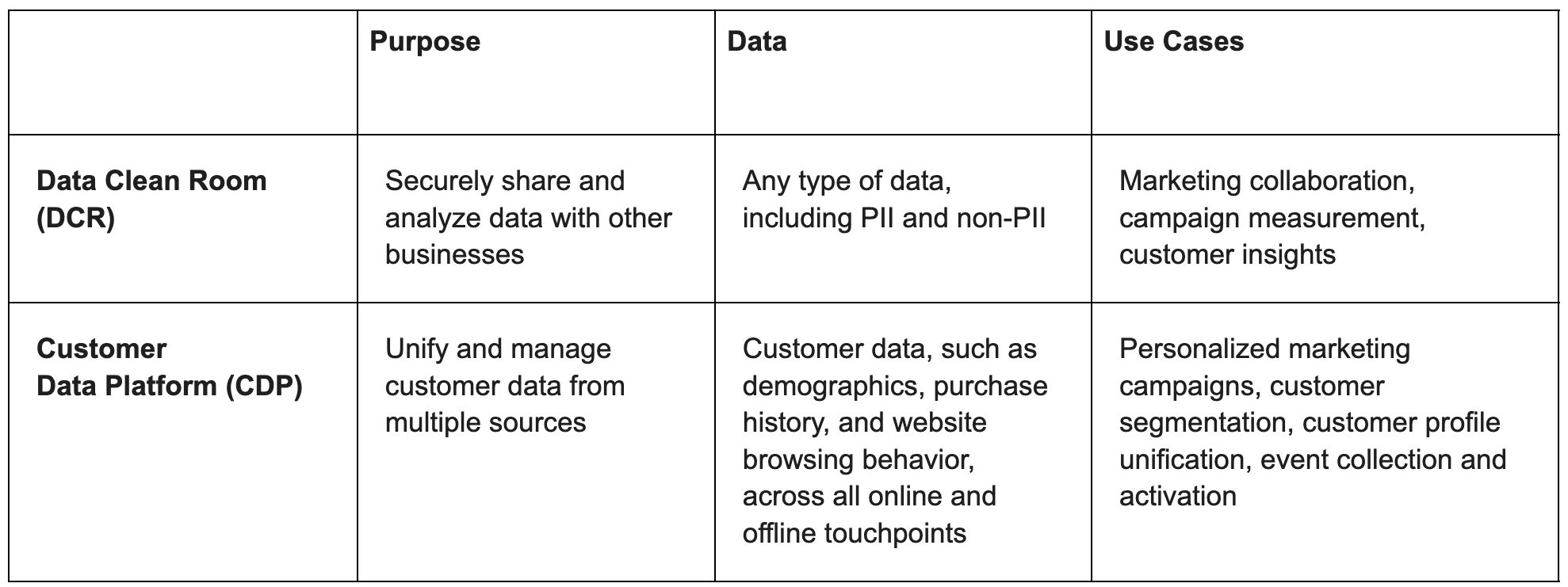It was working well - advertising at scale on the internet was a solved problem, but then along came tighter privacy legislation, Apple announced changing the mobile tracking world with App Tracking Transparency, and soon 3rd-party cookies are going away. How are marketers supposed to do proper campaign measurement and optimization if they can’t gather data about customers and get acquainted with how they are responding to ads?
Commerce over the internet relies on the ability of organizations to track users across domains. However new privacy laws and the deprecation of third-party cookies have led to increased signal loss impacting marketers’ ability to efficiently plan and measure their campaigns. How do we maintain end-user privacy while preserving the ability to understand our customers and their journey?
Let’s first look at the current architectural landscape:
-
Companies use a Data Management Platform (DMP) to help assemble all of the data they gather (often third-party* data). DMPs rely heavily on third-party cookies for tracking users across multiple websites. Their ability to provide a holistic view of a user's journey and interests across the web is already being impacted by the depreciation of third-party cookies.
-
Since the announcement we’ve seen that many are moving to a Customer Data Platform (CDP), driven by 1st-party* data. First-party data in a CDP is arguably the most privacy-friendly way to operate. CDPs are designed to centralize first-party data from a variety of sources, including websites, CRM systems, mobile apps, and more. In a world moving away from third-party cookies, first-party data becomes even more valuable, and CDPs are well-suited to manage it.
-
However, we simply can’t learn everything we need to know about our customers through our direct interactions- some use cases require a view of the customer from an external perspective. This gap can be addressed by adding 2nd-party data* to the strategy… and this is where our initial problem statement enters the fray. How can we analyze data across organizational lines but maintain privacy?
*CALLOUT: For a refresher on first, second, and third-party classifications of data, check out this blog.
The problem is that we need to share data without exposing the customer’s identity; but how? So engineers did what engineers always do - they created a way to meet the need! The data clean room has emerged as the answer to this riddle.
The Data Clean Room
A data clean room is a secure environment where advertisers, agencies, and publishers safely analyze and share data without revealing any personally identifiable information (PII), allowing them to adhere to privacy laws and regulations. They incorporate Privacy Enhancing Technologies (PETs) like encryption and differential privacy to protect individual identities and data misuse. Additionally, DCRs enforce strict access and privacy controls, ensuring users only access necessary data and resources for specific tasks. Data clean rooms are typically used by businesses to perform cross-brand marketing collaboration, measure the effectiveness of campaigns on advertising platforms, and gain insights into customer behaviors and attributes.
What can I do with a clean room?
By no means is this list comprehensive, but here are some common uses and benefits of clean rooms that organizations employ:
-
Campaign Measurement, Planning & Attribution: Clean rooms enable advertisers to gauge the efficacy of their campaigns. They can determine the overlap between conversions on their site and impressions on publisher and walled garden platforms, to drive a holistic understanding of audience exposure, impact, and ad performance. This leads to a more accurate measurement of return on advertising spend (ROAS). Publishers can allow advertisers to answer questions like, how will a certain audience ad campaign perform on this platform, or what was the performance of an executed campaign?
-
Profile Enrichment: By collaborating in a clean room environment, companies can augment their existing customer data with information sourced from partner collaboration. For instance, a credit card company could partner with a data analytics firm to gain insights into user shopping behaviors, thereby refining their targeted marketing campaigns.
-
First-party Data Partnerships: Data clean rooms catalyze collaborations, enabling brands to delve into new segments and uncover opportunities for brand growth. Clean rooms empower marketers to create precise look-alike models, fostering segmentation based on consumer behavior signals from partners. Two or more brands can assess the performance of their joint campaigns via 1P customer transactional data (LTV, purchase history, etc.) Imagine an airline partnering with hotels, or CPGs partnering with retail companies. All of these brands can leverage insights from collaborations to power a connected experience across their platforms and issue personalized offers.
CDPs and DCRs - How do they fit in my stack?
The relationship between a CDP and a data clean room is symbiotic. A CDP is essential for collecting and feeding organized, high-quality first-party data into the data clean room, forming the basis for deeper, multi-party analysis. In turn, the aggregated insights derived from the data clean room can be channeled back into the CDP, enriching customer profiles and enhancing data-driven activation strategies.



